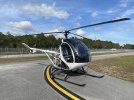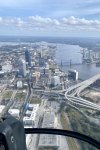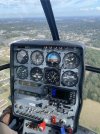You are using an out of date browser. It may not display this or other websites correctly.
You should upgrade or use an alternative browser.
You should upgrade or use an alternative browser.
Autonomous Fly-By-Wire?
- Thread starter Klaus M
- Start date
-
- Tags
- autonomous
Sac Arrow
Touchdown! Greaser!
- Joined
- May 11, 2010
- Messages
- 20,356
- Location
- Charlotte, NC
- Display Name
Display name:
Snorting his way across the USA
Anything to make flying easier and safer is good with me. I am a little concerned that they seem to be pushing it as a technology that must be implemented at a regulatory level.
In other words, I missed out buying stock in ADSB manufacturers. Read in to that what you will.
In other words, I missed out buying stock in ADSB manufacturers. Read in to that what you will.
- Joined
- Jul 3, 2012
- Messages
- 15,252
- Display Name
Display name:
Velocity173
I think they’re exaggerating the difficulty in flying a helicopter. Flying a helicopter vs flying an airplane is like driving a standard vs automatic car. Might take longer to learn but once you’ve got it, it becomes second nature.
This pilot workload they speak of in EMS isn’t as high as they’d like you to believe. An experienced pilot is already intuitively moving the controls. Staring down at an iPad trying to fly vs looking out a window isn’t a good idea. And what happens in a tight LZ when your finger slips on the iPad and you start to quickly drift? Can you catch it in time?
Now, as an autopilot, I’d say it would work remarkably well for an IIMC scenario. But then again, all it’s really doing is moving the button pushing from a typical panel AP to an iPad. Not that great of a leap in technology.
The automated autorotation feature is interesting but it’s not truly automated. Based on the description in the article, all the system does is the entry. The pilot takes over at some point and does the landing. A nice to have feature but not critical. If a pilot delays an auto and droops the rotor at a hover, no biggie. If a pilot delays an auto and droops the rotor at altitude, no biggie.
I’d be interested in seeing it perform in challenging environments. You can set parameters to try and keep you out of trouble, but Mother Nature doesn’t always comply. Will it hold a precise hover in winds while a powerline worker sits on a platform inches away from wires? If you get into LTE, how will it react? If you get into SWP, how will it react? If you quickly have to avoid wires, birds, traffic, how “intuitive” is an iPad?
To me, this system is really nothing more than a glorified AP. It can do the canned basics of A to B flying well but helicopter flying is far more fluid than that.
This pilot workload they speak of in EMS isn’t as high as they’d like you to believe. An experienced pilot is already intuitively moving the controls. Staring down at an iPad trying to fly vs looking out a window isn’t a good idea. And what happens in a tight LZ when your finger slips on the iPad and you start to quickly drift? Can you catch it in time?
Now, as an autopilot, I’d say it would work remarkably well for an IIMC scenario. But then again, all it’s really doing is moving the button pushing from a typical panel AP to an iPad. Not that great of a leap in technology.
The automated autorotation feature is interesting but it’s not truly automated. Based on the description in the article, all the system does is the entry. The pilot takes over at some point and does the landing. A nice to have feature but not critical. If a pilot delays an auto and droops the rotor at a hover, no biggie. If a pilot delays an auto and droops the rotor at altitude, no biggie.
I’d be interested in seeing it perform in challenging environments. You can set parameters to try and keep you out of trouble, but Mother Nature doesn’t always comply. Will it hold a precise hover in winds while a powerline worker sits on a platform inches away from wires? If you get into LTE, how will it react? If you get into SWP, how will it react? If you quickly have to avoid wires, birds, traffic, how “intuitive” is an iPad?
To me, this system is really nothing more than a glorified AP. It can do the canned basics of A to B flying well but helicopter flying is far more fluid than that.
Klaus M
Pre-takeoff checklist
Many jobs helicopters do are not going to be done by automation software anytime soon but, sightseeing on the other hand...
There must be a lot of people that just want to be flown from point to point by a computer because they are spending an awful lot of money on autonomous flying. I do believe that this autonomous computer Operating System (FlightOS) has the most potential. The aircraft that the FlightOS are installed in are completely Fly-By-Wire.
Just hope the wire don't come loose.

There must be a lot of people that just want to be flown from point to point by a computer because they are spending an awful lot of money on autonomous flying. I do believe that this autonomous computer Operating System (FlightOS) has the most potential. The aircraft that the FlightOS are installed in are completely Fly-By-Wire.
Just hope the wire don't come loose.

Klaus M
Pre-takeoff checklist
More companies are doing the Autonomous Fly-By-Wire Helicopters.
Click Link for latest news:
Airbus UpNext Autonomous Helicopter Project Name Vertex
This is a video of a Vertex Flight
Click Link for latest news:
Airbus UpNext Autonomous Helicopter Project Name Vertex
This is a video of a Vertex Flight
This has been the consensus in other discussions as well. But with the 407 and 119 getting IFR autopilot regulatory exemptions there's been a move to expand those exemptions in the interest of safety. Prior to the FAA shutting the door on SE helicopter autopilot installs years ago, there were attempts to provide onboard stability systems similar to your HeliSAS. However, the existing technology wasn't quite adaptable as it is today. My guess things will be changing for the better and while I doubt you wont see any "autonomous" levels in your 407, I'll bet your HeliSAS or similar will see updates/upgrades that will give you a full hands off option in the cockpit sooner than later.this system is really nothing more than a glorified AP.
FYI: the helicopter Auto FBW been around for decades and flying. The sticking point is certification with many discussions globally over the years. Even as the 525 and 609, both FBW, get close to their final certifications FBW is still a sticking point. However, once the 525 or 609 hit the market then you see more FBW on the rotor side at all levels.More companies are doing the Autonomous Fly-By-Wire Helicopters.
Last edited:
Klaus M
Pre-takeoff checklist
@Bell206 I agree with your points. Helicopters are the most challenging of the Autonomous aircraft. Proving and certificating a helicopter will clear the way for all other aircraft autonomous system installations. What Garmin has done with the push button auto-land is just another little step towards full certification of a more complete autonomous system.
Fly-By-Wire (FBW) aircraft are different then auto-pilot aircraft. Auto-pilot servos can be over powered and the pilot can force the flight controls or just turn off the servo's power. Autonomous FBW processes the pilots inputs and follows through as the computer determines as safe. No power off switch.
I'm predicting 2024 to be a big year for FBW aircraft. There's many more anoucements coming.
Fly-By-Wire (FBW) aircraft are different then auto-pilot aircraft. Auto-pilot servos can be over powered and the pilot can force the flight controls or just turn off the servo's power. Autonomous FBW processes the pilots inputs and follows through as the computer determines as safe. No power off switch.
I'm predicting 2024 to be a big year for FBW aircraft. There's many more anoucements coming.
Klaus M
Pre-takeoff checklist
I see few pilots are interested in the near future for aviation but, this is where the money is being spent. Most every participant of POA is most likely a pilot or intend to be a pilot. That said, removing the direct connection to the flight controls is not very appealing. Airbus airliners have been FBW for many years and soon many new GA aircraft will be FBW also. This evolution in aviation is transpiring so fast it's hard to talk about I'm sure.
Another Cockpit AI assistant. This one by Honeywell:
Honeywell Single-Pilot Assistant
And yes you read it right "DARWIN" project. I'm sure there will be an award for that.
Another Cockpit AI assistant. This one by Honeywell:
Honeywell Single-Pilot Assistant
And yes you read it right "DARWIN" project. I'm sure there will be an award for that.

- Joined
- Jul 3, 2012
- Messages
- 15,252
- Display Name
Display name:
Velocity173
Flew a real hands on helicopter today. No iPads here. First piston I’ve ever flown too.
View attachment 122906View attachment 122907View attachment 122908
Traffic watch as a side hustle was dead I thought.
Klaus M
Pre-takeoff checklist
The Autonomous Aviation projects are coming like it or not... and it's coming fast:
Cessna Caravan Flies Cargo Autonomously
Cessna Caravan Flies Cargo Autonomously
Last edited:
Klaus M
Pre-takeoff checklist
Here's another. There's more coming ....
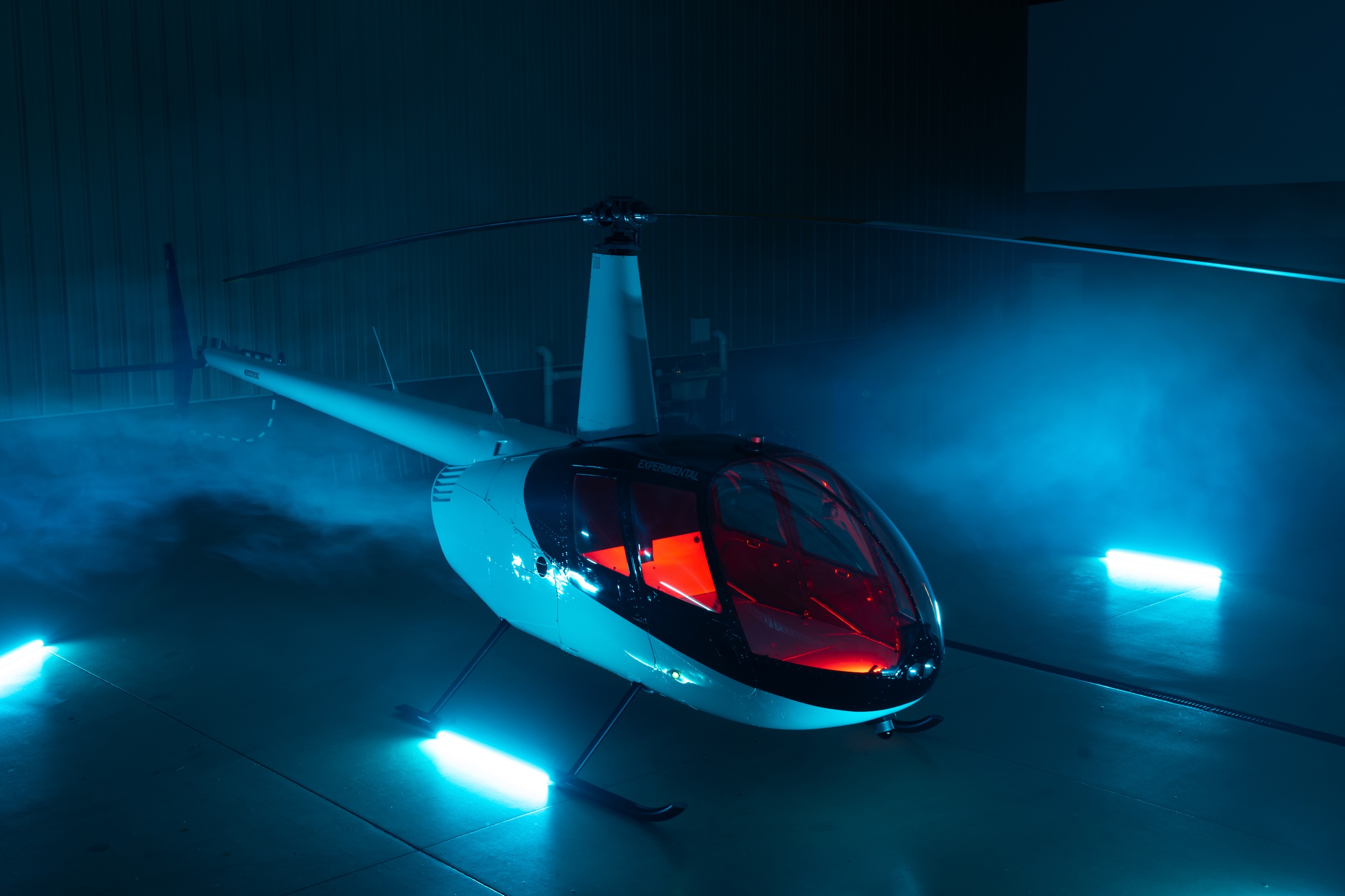
 rotor.ai
rotor.ai

Rotor Unveils R550X Uncrewed Helicopter and Begins Production | Rotor
Rotor unveils the R550X, the largest uncrewed civilian helicopter on the market, and begins production.
aftCG
Line Up and Wait
- Joined
- Aug 8, 2015
- Messages
- 817
- Display Name
Display name:
aftCG
As a former freight pilot in rural Alaska: Worst application I can think of.The Autonomous Aviation projects are coming like it or not... and it's coming fast:
Cessna Caravan Flies Cargo Autonomously
Does this aircraft unload freight by itself? Who performs the walk around to check doors, tires, prop (lots of FOD out there), children/dogs, freight carelessly dumped by other operators? How does it deal with a situation like getting a wheel stuck in a snow berm?
You could not depend on village agents to perform these tasks. Turn over is high and their give a s*** is busted.
- Joined
- Dec 5, 2010
- Messages
- 5,155
- Display Name
Display name:
GeorgeC
It's like putting on a big backpack, isn't it?Flew a real hands on helicopter today. No iPads here. First piston I’ve ever flown too.

- Joined
- Jul 3, 2012
- Messages
- 15,252
- Display Name
Display name:
Velocity173
It’s actually a bit of a workout. I’ve gotten lazy and too used to hydraulics and computers helping me. Messing around with the throttle to keep it in the green arc…too much work.It's like putting on a big backpack, isn't it?
Klaus M
Pre-takeoff checklist
What part of Alaska? I spent some time in Southeast.As a former freight pilot in rural Alaska: Worst application I can think of.
Does this aircraft unload freight by itself? Who performs the walk around to check doors, tires, prop (lots of FOD out there), children/dogs, freight carelessly dumped by other operators? How does it deal with a situation like getting a wheel stuck in a snow berm?
You could not depend on village agents to perform these tasks. Turn over is high and their give a s*** is busted.
The idea of replacing pilots with AI operating systems is tough for me to image also. I was one of the Capstone project people (in 2003) and there was a lot of trial and error with the first glass panels. The whole time we where installing the Chelton systems the lead FAA folks hinted at full autonomous aircraft someday. I know very well that the FAA and NTSB are behind the elimination of the 'Pilot' as they are today.
Pilots will still be sitting in the cockpit of these autonomous aircraft but they'll mostly be glorified Ramp Rats. When they see a four wheeler running up and down the runway they'll push a go-around button.

I think if you look at the big picture its ICAO and EASA that are the big players since they've been working on single pilot cockpits for 10+ years. But the move has been toward single pilot before true autonomous in mainstream operation.I know very well that the FAA and NTSB are behind the elimination of the 'Pilot' as they are today.
From what I seen, the autonomous aircraft you mention are more tied to UAM/AAM markets than replacing existing manned ops. And with the advent of the use of commercial drones theres been a move in the last 5 years to create hybrid drones from current airframes to increase abilities.
Regardless, autonomous and remote piloted aircraft have been around for years yet few make it past the prototype phase due to no viable market. Unfortunately crossing TC aircraft into such a market has never really taken off.
Doc Holliday
En-Route
I know very well that the FAA and NTSB are behind the elimination of the 'Pilot' as they are today.
Klaus M
Pre-takeoff checklist
I think if you look at the big picture its ICAO and EASA that are the big players since they've been working on single pilot cockpits for 10+ years. But the move has been toward single pilot before true autonomous in mainstream operation.
From what I seen, the autonomous aircraft you mention are more tied to UAM/AAM markets than replacing existing manned ops. And with the advent of the use of commercial drones theres been a move in the last 5 years to create hybrid drones from current airframes to increase abilities.
Regardless, autonomous and remote piloted aircraft have been around for years yet few make it past the prototype phase due to no viable market. Unfortunately crossing TC aircraft into such a market has never really taken off.
Things are changing much faster then the 1914 Lawrence Sperry Autopilot days. "True Autonomous in Mainstream Operations" is happening now and the pilot is not going away for a while. The aircraft still need someone to kick the tires and sign manifest. Artificial Intelligence (AI) is the new kid on the block and it's perfect for autonomous flying. Powerful AI was the missing link in the previous autonomous aircraft concepts. We'll keep posting the next News release on this topic as they pop up.
Piper PA-46 with the 'Garmin Autoland' is certified by the FAA, EASA and the NTSB also likes it. I'm not for or against Fly-By-Wire aircraft but, I'm very interested in it and the technology behind it. My opinion..., I think AI flight operating systems are for real and happening fast. Still believe that fully battery powered aircraft are not ready and that battery technology has a long way to go before it's mainstream.
I guess it depends on how you define autonomous flight. But as mentioned earlier the garmin system and the other systems are more autopilots with extra functions than anything else in the big picture."True Autonomous in Mainstream Operations" is happening now
That said there are inroads being made with civilian autonomous flight with the leading contenders found on the eVTOL side. Those aircraft were designed and built with autonomous and remote flight as a primary control method.
So while autonomous capabilities are not part of the current certification requirements for those eVTOLs, IMO those aircraft will eventually be the first where a pax will get in the backseat and the aircraft will do its thing on its own.
Well several electrically powered aircraft are currently going through FAA and EASA certification or testing at the moment. So you'll be able to see how things go yourself shortly.Still believe that fully battery powered aircraft are not ready and that battery technology has a long way to go before it's mainstream.
And while batteries are not the only power source being used, the current battery tech is more than sufficient for the existing goals under UAM/AAM. As I've noted before, interesting times ahead.
Klaus M
Pre-takeoff checklist
Like I wrote earlier, I like learning about this technology. Computer controlled aviation technology is like aviation in the early 1900's and all the new and adventurous accomplishments. I appreciate the discussion @Bell206 and agree that 'light weight' battery powered flight is maturing very fast. Just still not convinced that the increased weight/energy ratio works. That's just me, you may be right.
Here's another recent accomplishment....
Here's another recent accomplishment....
Klaus M
Pre-takeoff checklist
This Christmas drone show video has a little behind the scene stuff...
Klaus M
Pre-takeoff checklist
Avweb put out two Autonomous articles today:
Avweb - Drone Devivery Business The Drone Company is Wing.Com
KingAir Fitted With Garmin AutoLand
Avweb - Drone Devivery Business The Drone Company is Wing.Com
KingAir Fitted With Garmin AutoLand
Klaus M
Pre-takeoff checklist
The Astrobotic’s Peregrine lunar lander is launching January 8th 2:18 am EST. This is the first in a series of autonomous missions to the moon to supply the Astronauts arrival in a couple years.
NASA Sets Coverage for ULA, Astrobotic Artemis Robotic Moon Launch
NASA Sets Coverage for ULA, Astrobotic Artemis Robotic Moon Launch
- Joined
- Jul 3, 2012
- Messages
- 15,252
- Display Name
Display name:
Velocity173
Everything I’ve seen as far as autonomous has been a very canned environment. Easy point A to B stuff. I’ll admit, probably 75 % of helicopter flying is that and I’m sure self flying vehicles can do that. But, can it do something like this at a moments notice? I doubt it.
Give ya another example. There are versions of the Black Hawk that have been self flying for about a decade. But is it capable of a multiship air assault? Nope. Theyre far from that type of flexibility. Even the most advanced one (M model) in service, while it has a full axis autopilot and can essentially land itself with a few clicks of a button, it’s not practical for complex operations (multiship dust landing). It’s just too slow.
Give ya another example. There are versions of the Black Hawk that have been self flying for about a decade. But is it capable of a multiship air assault? Nope. Theyre far from that type of flexibility. Even the most advanced one (M model) in service, while it has a full axis autopilot and can essentially land itself with a few clicks of a button, it’s not practical for complex operations (multiship dust landing). It’s just too slow.
Klaus M
Pre-takeoff checklist
REE Full-By-Wire truck chassis design press release January 11, 2024:
REE Completes U.S. Certification of Full-by-Wire Vehicles and Begins Customer Deliveries of its P7-C Electric Truck
REE Completes U.S. Certification of Full-by-Wire Vehicles and Begins Customer Deliveries of its P7-C Electric Truck
Klaus M
Pre-takeoff checklist
I understand what you are saying about the existing widely known technology and the capabilities of that technology. Although, my experience last year with the latest A.I. Flight Operating Systems are truly amazing. I just post the press releases because no one would believe what's happening if it came from just another POA poster.Everything I’ve seen as far as autonomous has been a very canned environment. Easy point A to B stuff. I’ll admit, probably 75 % of helicopter flying is that and I’m sure self flying vehicles can do that. But, can it do something like this at a moments notice? I doubt it.
Give ya another example. There are versions of the Black Hawk that have been self flying for about a decade. But is it capable of a multiship air assault? Nope. Theyre far from that type of flexibility. Even the most advanced one (M model) in service, while it has a full axis autopilot and can essentially land itself with a few clicks of a button, it’s not practical for complex operations (multiship dust landing). It’s just too slow.
Klaus M
Pre-takeoff checklist
EHang Announces Suggested Retail Price of RMB2.39 Million for EH216-S Passenger-Carrying UAV System in China
Guangzhou, China, February 1, 2024 - EHang Holdings Limited (“EHang” or the “Company”) (Nasdaq: EH), the world’s leading urban air mobility (“UAM”) technology platform company, announced the suggested retail price for its EH216-S passenger-carrying unmanned aerial vehicle (“UAV”) system in China. Given the market potential and substantial industry scale of China's low-altitude economy, coupled with the global trend of rapid growth in low-altitude aerial services, the EH216-S UAV system's official suggested retail price in China is set at RMB2.39 million per unit, effective from April 1, 2024. The Company believes the pricing will more effectively cater to the market needs and further enhance the value of electric vertical takeoff and landing aircraft (“eVTOL”) and UAM.
EHang | EHang Announces Suggested Retail Price of RMB2.39 Million for EH216-S Passenger-Carrying UAV System in China
The EH216-S UAV system's official suggested retail price is set at RMB2.39 million per unit, effective from April 1, 2024.
www.ehang.com
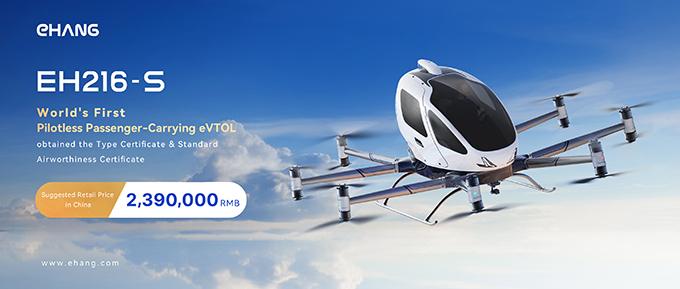
That's about $350,000.00 US Dollars.
Sac Arrow
Touchdown! Greaser!
- Joined
- May 11, 2010
- Messages
- 20,356
- Location
- Charlotte, NC
- Display Name
Display name:
Snorting his way across the USA
I wouldn't want to have to bail out of that thing.EHang | EHang Announces Suggested Retail Price of RMB2.39 Million for EH216-S Passenger-Carrying UAV System in China
The EH216-S UAV system's official suggested retail price is set at RMB2.39 million per unit, effective from April 1, 2024.www.ehang.com

That's about $350,000.00 US Dollars.
Doc Holliday
En-Route
Why yes, I want to fly in an aircraft designed and built in China. Gee, that’s why we see so many Chinese built aircraft in our country already.
Klaus M
Pre-takeoff checklist
Doc, The bigger take-away from these articles that I'm posting is the coming of a new era in Aviation. Unfortunately, the new era is not including us... 'the pilot'.Why yes, I want to fly in an aircraft designed and built in China. Gee, that’s why we see so many Chinese built aircraft in our country already.
Doc Holliday
En-Route
My takeaway from your article is the Chinese believing they have something that will work.Doc, The bigger take-away from these articles that I'm posting is the coming of a new era in Aviation. Unfortunately, the new era is not including us... 'the pilot'.
Don’t hold your breath.
Klaus M
Pre-takeoff checklist
That's why I'm keeping the readers of POA apprised of what is happening now. You don't have to hold your breath anymore. The cat's out of the bag. There's dozen of companies around the world releasing UAV passenger carrying aircraft, now. Many countries make it very difficult to sue everyone for anything. These countries are going to implement UAVs before U.S. but, the FAA is determined to get these things approved. You think the FAA is in bed with Boeing? You ain't seen nothing yet.My takeaway from your article is the Chinese believing they have something that will work.
Don’t hold your breath.
Klaus M
Pre-takeoff checklist
Many questions are answered in this short news video:
FYI: while pilotless aircraft have been around for years, none of the current 6 or so vertical lift pax carrying aircraft, ie.,eVTOLs, etc., going through an ICAO recognized certification process will be pilotless. Zero. And no where is the FAA or EASA pursuing it now or in the foreseeable future in my experience as they haven't finished the piloted version first.You don't have to hold your breath anymore. The cat's out of the bag. There's dozen of companies around the world releasing UAV passenger carrying aircraft, now.
- Joined
- Jul 3, 2012
- Messages
- 15,252
- Display Name
Display name:
Velocity173
There is no new era in pilotless aircraft. You’re still going to have airline, corporate and personal aircraft that are manned for many years to come. No one is coming to replace our Mooneys and Cessnas anytime soon.
While I’m sure in the next few years you’ll start to see pilotless air taxi services, who cares? As a pilot, I wouldn’t want to do that as a job anyway. These things are like 70 kts and 20 mile range? That’s a very limited application. As I stated earlier, I’ll be long retired (10 yrs) by the time they replace my line of work with a computer.
While I’m sure in the next few years you’ll start to see pilotless air taxi services, who cares? As a pilot, I wouldn’t want to do that as a job anyway. These things are like 70 kts and 20 mile range? That’s a very limited application. As I stated earlier, I’ll be long retired (10 yrs) by the time they replace my line of work with a computer.
Klaus M
Pre-takeoff checklist
That is exactly what the problem is: No One Is Replacing The Aging Aircraft. Nearly a million dollars for a new four place aircraft. With maintenance and insurance it's even wor$e.No one is coming to replace our Mooneys and Cessnas anytime soon.
What we call the 'Personal General Aviation Aircraft' is not getting much support now and the support will be much worse once mass production goes into Autonomous Aircraft. The replacement parts production businesses are going to loose interest in producing antique aircraft parts and they will re-focus on where the money is. This shift in production will affect most of General Aviation including jets. That's why there's large holding companies buying up companies like Hartzell.

Arcline Investment Management to Acquire Hartzell Aviation - Arcline Investment Management
Piqua, Ohio, Oct. 16, 2023 – Arcline Investment Management (“Arcline”), a growth-oriented private equity firm, today announced that it has signed a definitive agreement to acquire Hartzell Aviation (“Hartzell” or the “Company”) from Tailwind Technologies. Hartzell designs and manufactures...
 arcline.com
arcline.com
@Bell206 , These up and coming Unmanned Aerial Vehicles (UAV) with an Artificial Intellagence (AI) Operating System is not an Autopilot nor a Remote Controlled (RC) Aircraft. They are very much self-flying aircraft and the on-board pilots (if there is any) will be computer system analyst. Just think of the Garmin autoland as a small taste of what's being certified.
You are very much correct that there's a lot of UAVs. That should tell you something about the future of human operated vehicles.
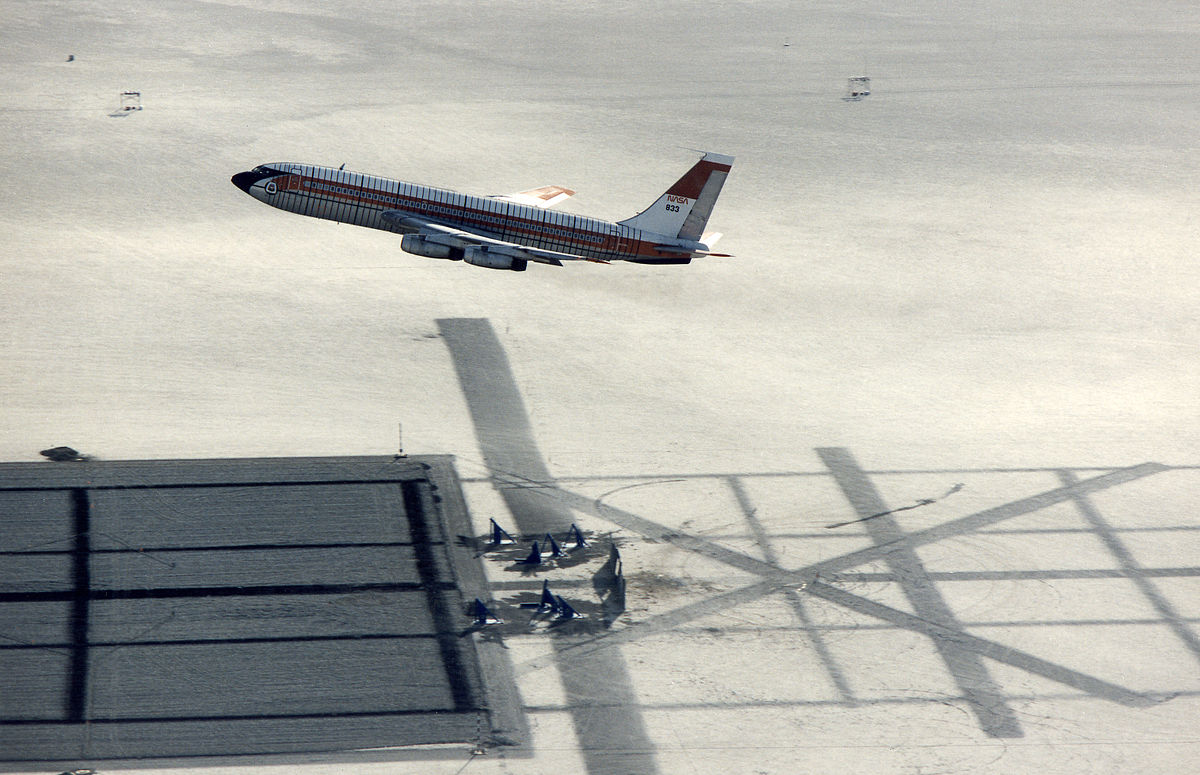
List of unmanned aerial vehicles - Wikipedia
All of this is taking place so much faster then any of us thought it would. That's why I'm bring it up. Everyone in this AI transportation industry has signed Non-Disclusure Agreements (NDA). Unless it's reported in the news no one will even hint what and how fast it's happening.
- Joined
- Jul 3, 2012
- Messages
- 15,252
- Display Name
Display name:
Velocity173
There’s already a healthy supply of good used aircraft on the market to meet demand. And the new GA market has been growing steadily for years. This ain’t the 1970s but we don’t have the demand of that era either.That is exactly what the problem is: No One Is Replacing The Aging Aircraft. Nearly a million dollars for a new four place aircraft. With maintenance and insurance it's even wor$e.
What we call the 'Personal General Aviation Aircraft' is not getting much support now and the support will be much worse once mass production goes into Autonomous Aircraft. The replacement parts production businesses are going to loose interest in producing antique aircraft parts and they will re-focus on where the money is. This shift in production will affect most of General Aviation including jets. That's why there's large holding companies buying up companies like Hartzell.

Arcline Investment Management to Acquire Hartzell Aviation - Arcline Investment Management
Piqua, Ohio, Oct. 16, 2023 – Arcline Investment Management (“Arcline”), a growth-oriented private equity firm, today announced that it has signed a definitive agreement to acquire Hartzell Aviation (“Hartzell” or the “Company”) from Tailwind Technologies. Hartzell designs and manufactures...arcline.com
@Bell206 , These up and coming Unmanned Aerial Vehicles (UAV) with an Artificial Intellagence (AI) Operating System is not an Autopilot nor a Remote Controlled (RC) Aircraft. They are very much self-flying aircraft and the on-board pilots (if there is any) will be computer system analyst. Just think of the Garmin autoland as a small taste of what's being certified.
You are very much correct that there's a lot of UAVs. That should tell you something about the future of human operated vehicles.

List of unmanned aerial vehicles - Wikipedia
en.wikipedia.org
All of this is taking place so much faster then any of us thought it would. That's why I'm bring it up. Everyone in this AI transportation industry has signed Non-Disclusure Agreements (NDA). Unless it's reported in the news no one will even hint what and how fast it's happening.
I think you’re looking for a problem where one doesn’t exist. No one is going to lay down $350,000 for a toy when they can buy a very nice Bonanza or Mooney. Ehang, Toby, Archer and others are zeroing on a niche market (short air taxi). They aren’t a threat in the least to those who already own private aircraft and they’re no where close to being able to the replace the majority of aircraft in commercial aviation.
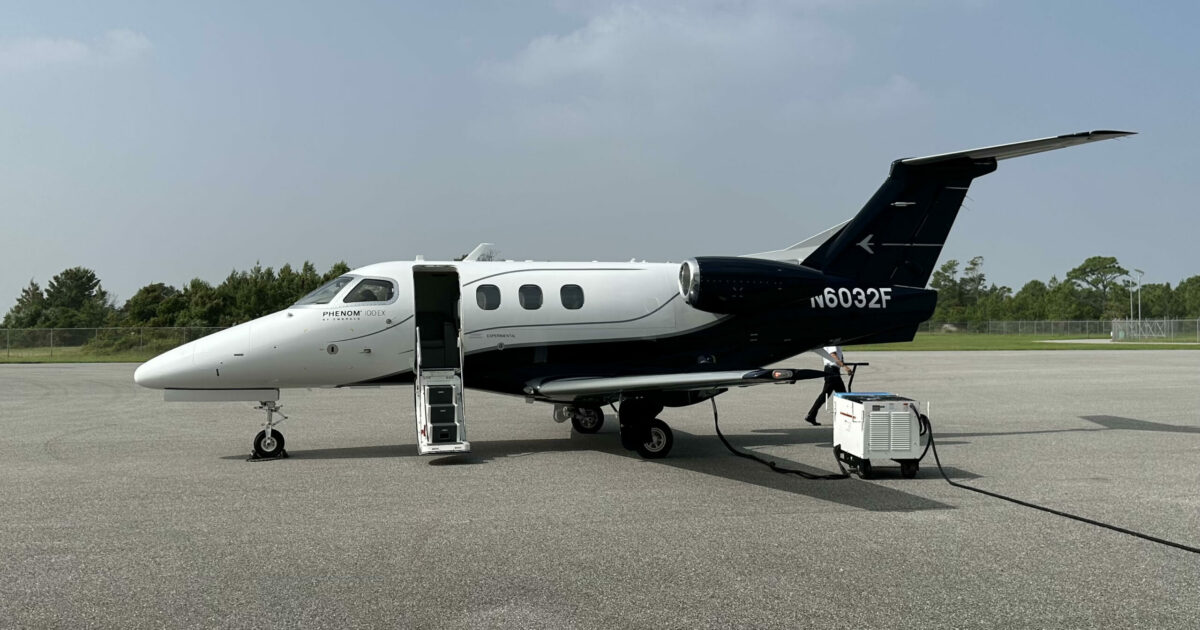
GAMA Numbers Show Continuing Health of General Aviation Market - FLYING Magazine
The general aviation manufacturing industry saw more than 10 percent growth year over year through third quarter 2023, according to GAMA.
I don’t know where you are getting your info from, but the “up and coming” powered-lift aircraft are a complete separate market than the legacy fixed-wing aircraft on the recreational GA side. If anything these new markets like the ongoing UAM market or emerging RAM market will be the key to keeping these legacy aircraft flying for quite sometime into the future.What we call the 'Personal General Aviation Aircraft' is not getting much support now and the support will be much worse once mass production goes into Autonomous Aircraft.
As to the "autonomous" side, where do you think the FAA stands on this since they've recommended all pilots should stay proficient with their manual flying skills and most recently to remain vigilant of the installed aircraft digital equipment due to GNSS spoofing?
Or, do you think HAL will be able to take care of things?
So much faster than who thought what?All of this is taking place so much faster then any of us thought it would. That's why I'm bring it up.
Perhaps you need to get out a little more as all variants of powered-lift and UAS have been steadily improving over the years. This is not something new. But just as every facet of life is changed by technology from smart cars to smart water heaters, so has aviation and by extension powered-lift aircraft and UAS.
For example, the VFS is putting on its 11th Annual eVTOL Symposium this month plus they are hosting their 80th Annual Forum & Technology Display which is the world's largest and longest-running VTOL technical conference. So you see vertical airspace integration has a long storied history to include your programmed “UAVs”. Maybe you should join the VFS so that you can stay on the cutting edge of all these developments?
Here’s a couple links on the topic if you are interested:
https://evtol.news/
https://vtol.org/
Klaus M
Pre-takeoff checklist
First I want to thank @Velocity173 , @Bell206 and @Doc Holliday for staying in a civil conversation. I'm trying to keep this conversation as informational as possible because it's serious to me. If I'm wrong about the rate this technology is progressing that's alright  . I'm planning on hand flying with cables and push-pull tubes for a long time to come.
. I'm planning on hand flying with cables and push-pull tubes for a long time to come.
A little about me. I flew a Cessna 172RG with the Chelton Synthetic Vision EFIS and Moving Map display in the summer of 2003. With the demonstration pilot onboard we flew approaches using the Highway-In-The-Sky (HITS) feature. I didn't remove the hood from takeoff until 25 feet AGL over the center line of the runway. These flights overwhelmed me and I've been chasing the latest and greatest ever since.
 The future of Aviation is going to be whatever it's going to be but, I'm planning to be a part of it. Aircraft totally battery powered are a little frightening and not sure they're ready. The Autonomous features is what impresses me. Occupying the left seat while the AI controls everything is strange but also amazing.
The future of Aviation is going to be whatever it's going to be but, I'm planning to be a part of it. Aircraft totally battery powered are a little frightening and not sure they're ready. The Autonomous features is what impresses me. Occupying the left seat while the AI controls everything is strange but also amazing. 
 . I'm planning on hand flying with cables and push-pull tubes for a long time to come.
. I'm planning on hand flying with cables and push-pull tubes for a long time to come.A little about me. I flew a Cessna 172RG with the Chelton Synthetic Vision EFIS and Moving Map display in the summer of 2003. With the demonstration pilot onboard we flew approaches using the Highway-In-The-Sky (HITS) feature. I didn't remove the hood from takeoff until 25 feet AGL over the center line of the runway. These flights overwhelmed me and I've been chasing the latest and greatest ever since.
WHO? The pilots and mechanics that participated 20 years ago in bringing Glass Panels into everyday aviation. What? On-Demand Air Travel for everyone anytime.So much faster than who thought what?
I've never been satisfied with less than 1% of the population being Pilots. That's just my hang-up I guess.There’s already a healthy supply of good used aircraft on the market to meet demand. And the new GA market has been growing steadily for years. This ain’t the 1970s but we don’t have the demand of that era either.
 The future of Aviation is going to be whatever it's going to be but, I'm planning to be a part of it. Aircraft totally battery powered are a little frightening and not sure they're ready. The Autonomous features is what impresses me. Occupying the left seat while the AI controls everything is strange but also amazing.
The future of Aviation is going to be whatever it's going to be but, I'm planning to be a part of it. Aircraft totally battery powered are a little frightening and not sure they're ready. The Autonomous features is what impresses me. Occupying the left seat while the AI controls everything is strange but also amazing. 

